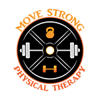3 Biggest Push-Up Mistakes and How to Fix Them
The push-up is a simple, but effective exercise. It can easily be regressed if an athlete isn’t performing it correctly or progressed and made more difficult for someone who can proficiently perform them on the floor with correct technique.
But, like with any exercise, there are common mistakes or technical flaws that can occur and should be addressed prior to progressing or implementing into a program.
With our athletes and clients that we work with at Cressey Sports Performance in Hudson, MA, we will implement push-ups into an upper body rehab to performance program as well as into a lower body program as a way to build total body fitness.
Here are the 3 Biggest Push-Up Mistakes and How to Fix Them.
Lack of Shoulder Blade Movement
One of the biggest mistakes that we see with a push-up is that the shoulder blades remain fixed on the rib cage and do not move OR move very little throughout the entire push-up movement.
In the video above, there is very little movement of the shoulder blades together OR apart during the lowering or lifting portion of the push-up. This may seem mundane and unimportant, but working with an athlete or client to promote shoulder blade movement can help to clean up technique, but also improve pain when performing a push-up.
There are various cues that can be used to promote shoulder blade movement, but one we like to use is “allow your shoulder blades to come together and then push them apart.”
By instructing the athlete to push the shoulder blades apart helps to promote good shoulder blade movement.
2. Loss of Trunk Position
One of the other common mistakes we see is when an athlete or client arches their low back.
In the first half of that video the athlete has an increased arch in his low back. Now, someone may be able to perform a pain-free push-up with this technique, but at the end of the day, it is not the most efficient way to perform it. If someone is having pain at the shoulder or somewhere else, we will address their trunk position first.
One cue we like to use is “maintain a straight line from your ears to your shoulders, hips and ankles”. Another cue we will use is “keep your body straight like a board”.
With this particular athlete in the video, this one correction helped to improve his shoulder pain as well as his push-up technique as shown later in the video.
Sometimes this can be just a positioning issue and the athlete needs to be cued into the right position OR it can be a core stability or strength issue and the athlete should be regressed to a version that they can be successful at such as Elevated Push-Ups.
By elevating the hand position and making the movement easier, the athlete or client can maintain a good trunk position. As this movement becomes easier over time, it can then be progressed towards the floor.
3. Forward Head
The 3rd most common mistake we see with the push-up is when someone’s face and head travel forward in relation to their body.
As you can see in the first half of the video, the client’s head and neck are protruding forward in relation to the rest of the body. More often than not, this is an issue the client can be corrected out of. In some cases, it may be a neck strength issue, but most commonly it is a technical issue.
One cue we like to use is “imagine there is a stinky shoe between your face and the ground”. This cue of a stinky shoe can remind the athlete not to let their head get in front of their body.
Another cue we like to use is “touch your chest to the ground, not your face”. This cue can help the athlete bring their chest to the ground first instead of their face.
The push-up is a great exercise for upper, core, and lower body health and can be implemented into most programs. As stated previously:
Lack of shoulder blade movement
Loss of Trunk Position
Forward Head
are the most common technical flaws that we see when clients and athletes perform push-ups. Try implementing some of the cues and tips we mentioned above to help improve your push-up technique. If you are dealing with an injury or are having difficulty getting back to the gym or doing what you love, we are here to help. Click HERE to take that first step to getting back to what you love to do!



